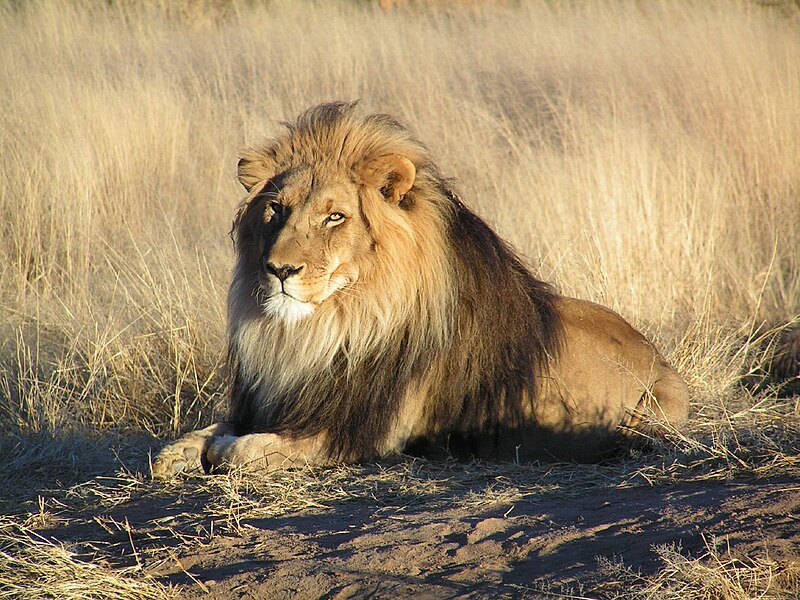The home range of an animal, that area which an animal
traverses and in which it exists, may seem simple from afar to discern, yet
holds mysteries for many species. One species may be contained in a home range
that is dependent or independent upon other species or even its own species in
a specific environment.
Panthera leo, or
African lions have a home range that overlap, yet the reasoning has not always
been certain. Benhamou et al studied the interactions of lions as they moved
independently of each other, jointly, or in avoidance of each other as a way to
study the home range overlaps. The goal
of these researchers was to uncover the interactions within and layout of home
ranges of the lions and see how it might apply to the known behavior of this
species.

Using GPS tracking of 55 lions, the researchers monitored
the lions in Hwange National Park in Zimbabwe over 7000 km². The main focus was to study the lions in a
specific space and a specific time, so that not only their home ranges would be
detected, but that their interactions could be adequately measured. It was found that for the most part, except
for one scenario of avoidance, most of the lions tended to move independently
of each other. Sometimes, the lions
would move their home ranges such that they did not overlap. However, the researchers reported that the
overlapping of lions was somewhat common, which also assists the findings that
the lions often move independently of one another in their home ranges.
Posted by Michael Dailing (A-week 1)
Pretty cool stuff. I never really thought about the fact that there were more than one type of the same species living in such proximity to one another. Did it ever mention how wide of a range any particular lion species traveled? Just something I thought would be interesting!
ReplyDeletePosted by Taylor Schille
I felt the same way! It is amazing that this species exists in such proximity. The study was heavy on statistics using the home range of the lions and using a utilization distribution which is the probability of finding in animal in a specific area of its home range. The values they found were pretty amazing, this is a quote from results section of the paper(linked in the blog post) "For interbarycentre distances lower than 15 km, the overlap was always larger than 0.1, and was higher than 0.5 in 43% of the cases. "
DeleteI do not know statistics more than just intro, but it seems that some of the lions got pretty close together!
Posted by Michael Dailing
Are the lions allowing overlap of range simply because they don't know? I would imagine by chance two lions may never occupy the overlapping section at the same time. Its good to see more study into tracking the movement of animals as this kind of study hasn't been possible until the advent of GPS tracking and has been slow to gain wide implementation.
ReplyDelete-Stephen O'Brien
The study showed that the lions often knew that there was an overlap. In fact, there was sometimes cases of joint interaction when the lions actually went together in a specific overlap of their home ranges. This joint interaction was for male-male, and female-female, and female-male(which seemed to be due to mating). So although sometimes there was avoidance in the interactions of the genders of the species, there was independent and joint interaction too; so sometimes they knew what they were doing and continued to overlap! Amazing!
DeletePosted by Michael Dailing
With what was concluded that needs to be further researched (distance traveled and proximity of the creatures, but also the direction being traveled), I'm confused about what exactly this study focused. I understand that each pride tended to move independently of each other, naturally one would want to avoid unnecessary confrontation, with the exception of juvenile male lions striking out to claim their own pride, but what interactions were actually noted, is this just concluding that for the majority of the time the apple doesn't fall far from the tree?
ReplyDeleteThomas Flores
This is a really great study. In one of my classes we learned about how lions will compete for the pack of females. I had no idea their home ranges could overlap. I would love to see more information done on this topic.
ReplyDeletePosted by: Lindsey Janof
This is definitely one of those studies that doesn't receive much attention, but its still important to know about. One question I have to ask you is that have there been other studies on home ranges like this or is this one an exception?
ReplyDeletePosted by Jacob Geier